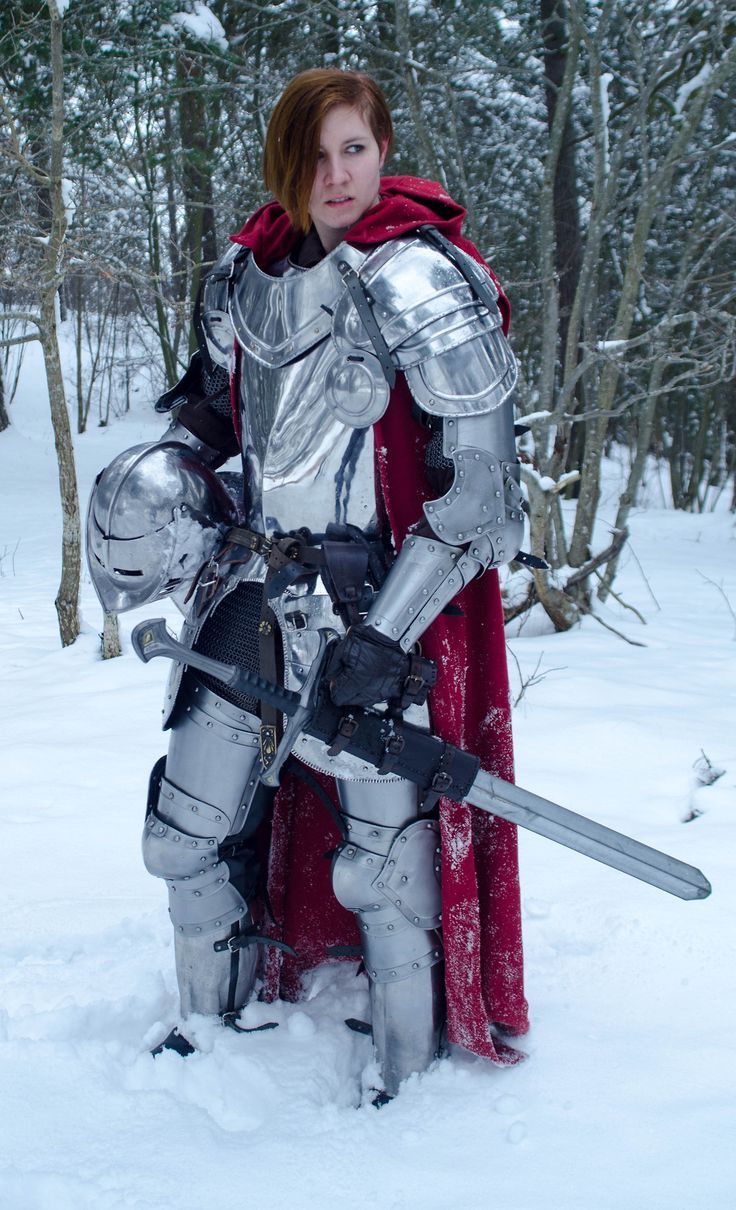Chainmail Armor Sets vs. Plate Armor: Which Offers Better Protection?
Posted by SwordsSwords on Aug 15th 2024
When we think of medieval knights and warriors, images of shining armor immediately come to mind. Two of the most iconic types of armor from this era are chainmail armor and plate armor. Both offered protection on the battlefield, but each had its own strengths and weaknesses. In this blog, we’ll explore the differences between chainmail armor sets and plate armor, focusing on which one provides better protection.
Understanding Chainmail Armor
Chainmail armor, often referred to simply as "mail," is made up of small metal rings linked together in a pattern to create a mesh-like fabric. This armor has been around for centuries, with its use dating back to at least 300 BC. Chainmail armor was popular among warriors because it was relatively flexible, allowing for good mobility while still offering a decent level of protection.
Advantages of Chainmail Armor
One of the primary benefits of a chainmail armor set is its flexibility. The interlocking rings allow the armor to move with the wearer’s body, which makes it easier to perform various combat maneuvers. This flexibility is a significant advantage, especially in situations where quick, agile movements are necessary.
Chainmail armor is also effective against slashing attacks. The metal rings are designed to absorb and distribute the force of a sword or axe strike, preventing the blade from cutting through to the skin. This made medieval knight chainmail particularly useful against opponents armed with bladed weapons.
Additionally, a chainmail armor set is lighter than plate armor. This lighter weight reduces fatigue during long battles or marches, allowing the wearer to fight for more extended periods without tiring as quickly.

Disadvantages of Chainmail Armor
However, chainmail armor isn’t without its drawbacks. While it’s great at defending against slashes, it’s less effective against blunt force trauma. Weapons like maces and war hammers can cause significant damage even if the mail isn’t penetrated, as the force of the blow can still cause bruising, broken bones, or internal injuries.
Another disadvantage is that chainmail armor doesn’t offer much protection against piercing attacks. Arrows, spears, and even some thin swords can find their way through the gaps in the rings, making it vulnerable to these types of assaults.
Understanding Plate Armor
Plate armor, on the other hand, consists of large, solid pieces of metal shaped to fit the body. This type of armor became more widespread in the late medieval period, as advancements in metallurgy made it possible to create stronger, more protective suits of armor.
Advantages of Plate Armor
The most significant advantage of plate armor is its superior protection. The solid metal plates are excellent at deflecting blows, whether they come from swords, arrows, or even blunt weapons. Plate armor’s ability to resist piercing attacks is particularly noteworthy; an arrow or spear that would easily penetrate chainmail armor would struggle to get through the thick metal plates.
Plate armor also provides better protection against blunt force trauma. The rigidity of the plates helps to disperse the force of a blow across a wider area, reducing the likelihood of injury from impact.
Despite its heavy appearance, plate armor was often well-balanced and allowed for surprisingly good mobility. Knights trained extensively in their armor, becoming accustomed to the weight and learning how to move effectively while wearing it.
Disadvantages of Plate Armor
However, plate armor isn’t perfect. The most obvious drawback is its weight. While advancements in design helped distribute this weight more evenly, plate armor was still significantly heavier than chainmail armor. This could lead to fatigue more quickly, especially during prolonged combat or when traveling long distances.
Another downside is that plate armor can restrict movement more than chainmail armor. Although knights were trained to be agile in their armor, there’s no denying that the solid plates limited flexibility, making some actions more challenging.
Plate armor was also more expensive to produce and maintain. The craftsmanship required to create a well-fitting suit of plate armor was extensive, and only the wealthiest warriors could afford such protection.

Which Offers Better Protection?
When it comes to overall protection, plate armor generally offers superior defense compared to chainmail armor. Its ability to deflect slashes, pierce-resistant design, and resistance to blunt force trauma make it the better choice for those who could afford it and were prepared to bear its weight.
However, chainmail armor should not be discounted. It offered a good balance between protection and mobility, making it an excellent choice for many soldiers, especially in earlier periods when plate armor was less common or too costly.
Ultimately, the choice between chainmail armor sets and plate armor would have depended on the specific needs and resources of the warrior. For some, the flexibility and lighter weight of chainmail armor would have been more important, while others would have prioritized the superior protection of plate armor, despite its disadvantages.
In the end, both types of armor played crucial roles in the history of warfare, each with its own strengths that made it the preferred choice for different types of combatants.
If you're interested in acquiring your own chainmail armor set, chainmail gloves, or even a full medieval knight chainmail, Swordsswords.com offers the best options for you. They have a wide selection of chainmail armor for sale that suits both enthusiasts and collectors alike.

